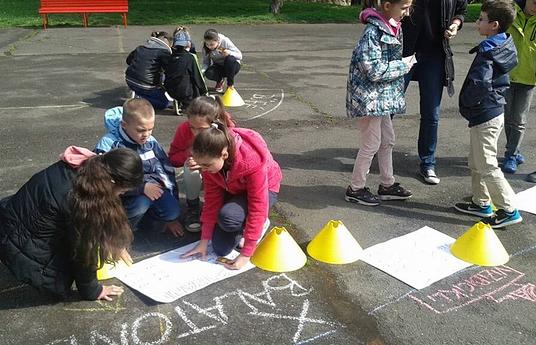I wanted to create (initially for myself and my own class) a versatile hands-on-material for mathematics instruction, which would be easy for students to access when needed to support their learning. Additionally, through hands-on-learning, this eases teachers workload as he can observe his students' thought processes through these activities and provide them support or encouragement when needed.
From outside my innovation looks like a handy and fancy box. When you open the magnetic hatch you will face a lot of meaningful learning. After this when looking pupils faces, my innovation looks like active wonder, sounds like verbalized thinking, and feels inspiring. When you face a problem in a mathematical exercise, first thing (almost) always is to Take out the Cake Book and after that Go to a suitable page. So, the main-material is the Cake Book. The Cake Book has no natural language on its pages so it can be used wherever by whoever. On every page there is a circle which has divided as many pieces that the number is. Also there are colorful circles that shows in what number the page number can be divided. Also the number is written by symbolic language. There are also 12 transparent plastic films and different size of coins to make it easier to understand place values in decimal system and counting. By using four languages of thinking, the learning maths will be sustainable.
I have tested and developed it first in my own class room with 1-4 and 7-9 graders. After that I decided to go to test it to unknown classes. I asked teachers that could I come there and have a functional lesson. The lessons were great. The teachers said that my method is inspiring. I noticed that the hands-on-learning can be organized in every class with unknown materials by random teacher. (I was the random teacher for the pupils.) After that I tested the material in China. First time 2019 and second time in 2023. I noticed that because we didn't have common natural language with Chinese pupils I had to use tactile and pictorial languages more. I founded my company Merkitysten Oy (Ltd.) in Oktober 2023 and after that I have started marketing more active.
You should go to a website: kauppa.merkitysten.fi and order one for you. Or you can just mail to marko@merkitysten.fi and order that way. You should subscribe @merkitystenmatematiikka from Instagram and Youtube.



